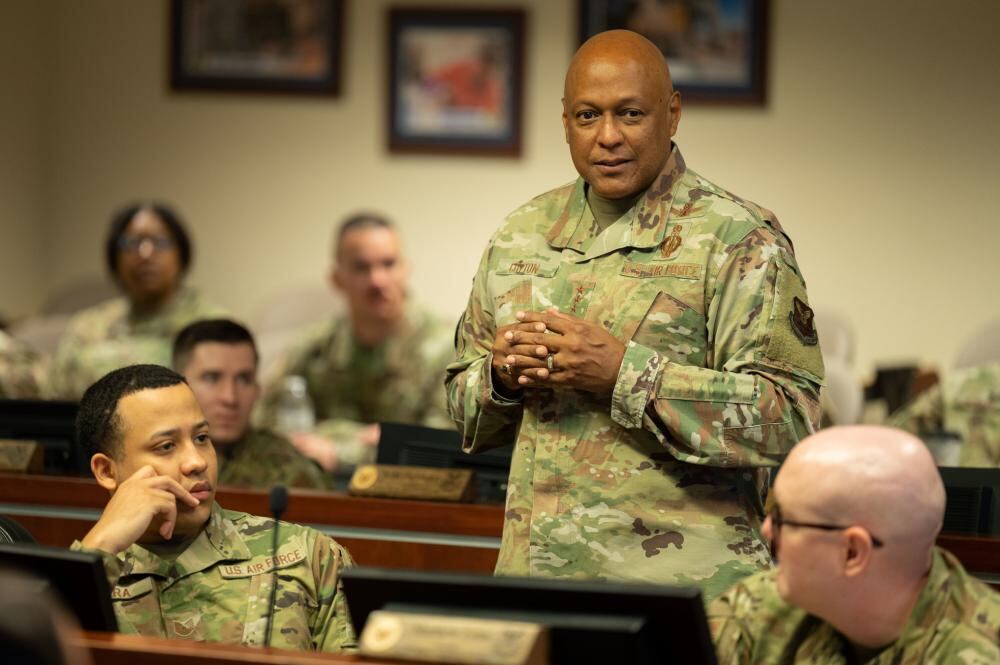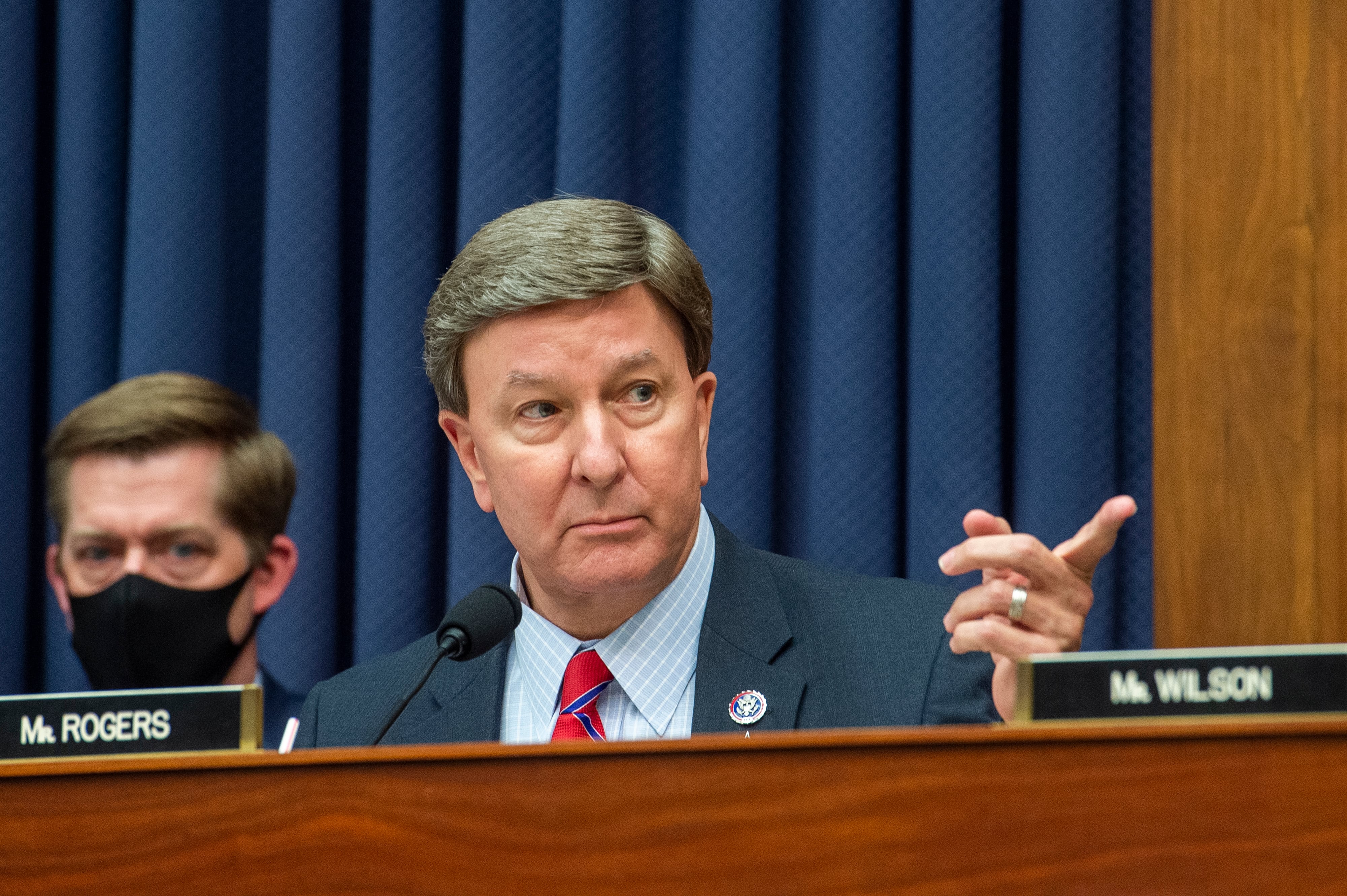WASHINGTON ― The nominee to lead the U.S. nuclear arsenal said Thursday that supply chain snags that are pummeling the defense industrial base are also hurting Washington’s plans to modernize its aging nuclear arsenal.
“I would venture to say that it’s probably being seen across the Department of Defense, but in particular for the nuclear portfolio,” Air Force Gen. Anthony Cotton, nominated to lead U.S. Strategic Command, told the Senate Armed Services Committee, at his confirmation hearing.
Without offering specifics, Cotton credited vendors with “Herculean efforts” to keep programs on track, but said “the realities of supply chain limitations and supply chain shortfalls” have taken hold. It’s taking some nuclear programs up to 90 days to source certain U.S.-made components that would have typically taken 10 days, he said.
“If you look at what we need to do in regard to maintaining a flow and schedule to get our new, modernized systems online, if you introduce that into the flow, those delays right there are going to cause me concern,” Cotton said. “I think it’s going to take everyone to understand how to close the gap on supply chain management, to get the supplies to industry partners who are trying to modernize this force.”
Asked by Sen. Jeanne Shaheen, D-N.H., Cotton said he was no longer comfortable that needed U.S.-manufactured components and materials would be available. “I did,” he said, “until we started to see that kind of eke into the schedule with problems in the supply chain.”
Operating and modernizing the nuclear force will cost $634 billion in the 2021-2030 period, the nonpartisan Congressional Budget Office said last year. Along with the expense of the Energy Department managing nuclear stockpiles, the Defense Department is modernizing the sea, air and land-based legs of the nuclear triad.
At a wide-ranging hearing, Cotton punted on the sensitive question of whether he agrees with the Biden administration’s plans to cancel the sea-launched nuclear cruise missile, which deemed the SLCM-N as costly, redundant and destabilizing. Cotton said he was “not familiar” with the system and wants to make his own assessment of whether it fills a capability gap.
“When it comes to SLCM-N, I must admit that I would like to be able to do like my predecessors before, to make an assessment on that,” Cotton said. “If it is able to meet that capability gap that is there, I’d like to be able to see that and assess that so I can make my best military assessment on the specific weapon system itself.”
A list of four-star officers have come out against the administration’s plans, including Strategic Command’s current chief, Adm. Charles Richard, Joint Chiefs Chairman Gen. Mark Milley and Vice Chairman Adm. Christopher Grady. Amid those assessments, lawmakers are poised to add funding through the annual defense policy bill and upend the administration’s plans to cancel the missile.
Last week, Undersecretary of Defense for Policy Colin Kahl offered a glimpse into the Biden administration’s rationale against the SLCM-N, when asked in a public forum about Russian President Vladimir Putin’s arsenal of low-yield nuclear weapons. Kahl said he dismissed “the notion that SLCM-N is somehow a silver bullet to the challenge we find from Putin in 2022, for a capability that doesn’t pay off until the mid-2030s and comes with an enormous price tag.”
“Yes, nuclear weapons will remain the ultimate backstop, but we have to have the resources to invest in space, to invest in cyber, to invest in advanced conventional systems and emerging technologies,” Kahl said.
Cotton, a career missile and space officer, manages the Air Force’s nuclear weapons and bombers as commander of Air Force Global Strike Command. Nominated in June, he would replace Richard, who’s been in the job since late 2019.
Amid lawmaker questions about the state of Nuclear Command, Control and Communications, or NC3, Cotton assessed its cybersecurity as high and said he was pleased with efforts to link older and more modern systems.
RELATED

Asked by Sen. Jacky Rosen, D-Nev., about a U.S. investigation into Chinese telecom firm’s placement of equipment near U.S. missile silos, Cotton said the command is “absolutely looking into” the potential cybersecurity threat.
“We are really paying attention to what we’re seeing as the Chinese are taking advantage of some of the opportunities that they can have near some of our ICBM facilities,” he said.
When asked about the possibility of 5G communications encroaching on spectrum used for the nuclear enterprise and other national security uses, Cotton said it was “incredibly critical” that the military make federal regulators “understand the necessity to protect certain bands.”
“If confirmed, I would want to collaborate with the FCC and others,” he said, adding “maybe we need to message better” on the importance of key spectrum bands.
Looming over the hearing was Strategic Command’s scramble to reimagine nuclear deterrence theory that simultaneously faces Russia and China ― a process Cotton vowed to continue, if confirmed. Upending past assumptions, China is working more closely with Russia and it’s expanding its nuclear force faster than previously predicted.
“As recently as 2018, we would describe China as having a minimal nuclear deterrent [and] that it was probably about regional hegemony,” Cotton said. “Today they’re building ground-based ICBM silos, they have the H6-N nuclear-capable bomber that’s a strategic launch platform.”
Asked by Sen. Dan Sullivan, R-Alaska, about satellite imagery from 2021 showing three new missile field in western China with about 120 missile silos each, Cotton called it “absolutely incredible, and in such a short time.”
Joe Gould was the senior Pentagon reporter for Defense News, covering the intersection of national security policy, politics and the defense industry. He had previously served as Congress reporter.





